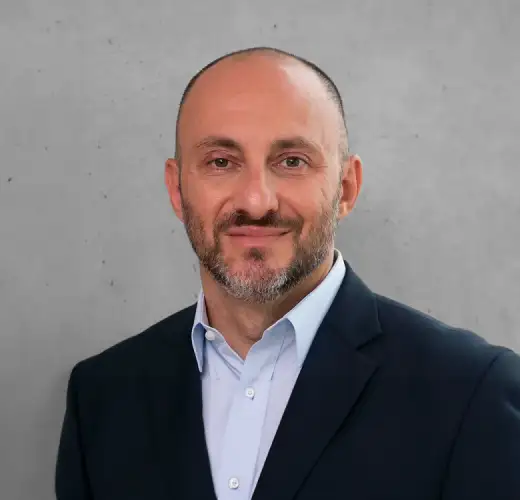Medicare open enrollment is a key time to adjust coverage so stroke survivors get the care they need.
Choosing the right insurance plan can feel overwhelming, especially when recovering from a stroke or helping someone manage their care. Open enrollment for Medicare happens once a year. For many families, it is the only time to update coverage for the year ahead.
This guide breaks down the essentials so stroke survivors and care partners can make decisions with clarity and confidence.
 |
|
Why Is Open Enrollment Such an Important Time for Stroke Survivors?
Stroke survivors often need steady therapy and equipment, so picking the right plan is essential.
Open enrollment is when most people can change their health insurance for the upcoming year. After this period closes, the ability to switch plans is limited unless a person qualifies for a special enrollment period.
Stroke survivors often need long-term therapy, equipment, and regular check-ins with clinicians. Insurance choice directly affects:
- Coverage: Which therapies, devices, or medications are covered or excluded in the plan’s medical policies?
- Cost: What will your out-of-pocket expenses be after premiums, deductibles, co-pays, and co-insurance?
- Gatekeeping: Does a plan require a referral from Primary Care, and/or authorization from your insurance, before they will cover certain tests, services or therapies?
- Choice: Are the clinicians and facilities you currently use included in the network of the plan you’re considering, or would you need to move your care in order for it to be covered?
For many families, this is a time to step back and ask: What care do we need this year, and which plan gives us the best path to receive it?
What Questions Should I Ask When Comparing Medicare Plans?
There are four questions to consider when comparing plans that will help you, focused on cost, coverage, and access.
Most stroke survivors look at Medicare Part A, B and D, Medicare Advantage (Part C), secondary insurance, or a mix of these. When comparing plans, focus on four core questions that help clarify cost and access to care.
- What therapies and services are covered? Every Medicare plan has different coverage benefits. Some offer special benefits that are meaningful to their members, like gym benefits, dental and eye coverage. If CMS has written a positive National Coverage Decision (NCD) for a therapy, Medicare Advantage plans will cover it as well, but if there is no explicit mandate for coverage, a plan can make their own decision. Those therapy-specific decisions can be found in a plan’s Medical Policies. If there is no medical policy written for a therapy, the plan will decide on a case-by-case basis. If someone knows they will need a specific therapy or device, they should ask the plan directly whether it’s covered before deciding where to enroll.
- Are my current clinicians in-network? Each plan contracts with a group of clinicians to provide care to their members at pre-negotiated rates. These clinicians are considered “in network”.Some plans allow out-of-network care at a higher cost. Others do not allow it at all. If a stroke survivor relies on a specific neurologist, therapist, or clinic, confirm the provider is currently part of the plan’s network before enrolling.
- What will my costs be throughout the year? Since stroke survivors often have regular appointments, predictable costs matter. Pay attention to:
- Monthly premiums
- Deductibles
- Co-pays or co-insurance amounts
- Annual out-of-pocket maximums
- Who has authority over my care? Many private plans use gatekeepers, which can include:
- A primary care provider who controls referrals
- A requirement for prior authorization from the health plan before therapy or equipment is approved as medically necessary
Gatekeeping can slow care or create barriers. Knowing these rules early helps avoid surprises.
Are There Common Surprises That Catch Stroke Survivors Off Guard?
Secondary insurance, coverage limits, and approval rules often surprise families.
Several recurring themes emerge for families navigating Medicare and private insurance, especially in the unexpected issues that often catch stroke survivors off guard.
Secondary insurance matters more than people think. Medicare Part B primary insurance covers 80% of many services. The remaining 20% becomes an out-of-pocket cost unless a person has secondary insurance. About 40% of Medicare members purchase Medigap secondary insurance plans each year.1 With MediGap, a person opts into and pays an additional fixed monthly premium, and the MediGap plan then covers some or all of their out-of-pocket costs (depending on which MediGap plan they choose)
When a person first enrolls in Medicare Part B, they have a six-month window for open enrollment in Medigap. During that time, they cannot be denied a policy due to a pre-existing condition. Outside of open enrollment, if someone wants to buy a Medigap plan, the insurer may require medical underwriting and can deny the application or charge higher premiums based on health history.
If a person elects Medicare Advantage, they have forfeited their opportunity to also enroll in MediGap without medical underwriting. However, if their Medicare Advantage plan leaves their area or changes their benefits, or if a person loses their employer-based insurance, they have a new special enrollment period during which they can elect for Medicare Part B and MediGap without medical underwriting.
Medicaid can also act as secondary insurance for many stroke survivors. Medicaid enrollment happens at the state level, and a person has to re-qualify each year. Many Medicare members who enroll in Medicaid are given status as a Qualified Medicare Beneficiary (QMB) based on their income and resources. If a person is a QMB, then Medicaid pays for all their Part A and Part B premiums, deductibles, co-insurance and co-payments.
Medicare fee-for-service offers broader access than many expect. With fee-for-service:
- Patients can see any clinician nationwide who accepts Medicare, as long as the clinician is licensed in the state where care is provided.
- Prior authorization is not needed for durable medical equipment.
- A PCP referral isn’t required for coverage of specialist visits or DME.
- The rules are consistent and straightforward.
This is helpful for people seeing multiple specialists.
Medicare Advantage plans include extra perks but more restrictions These plans may offer dental, vision, or wellness benefits, as well as low premiums and supportive case managers. But they also:
- Have smaller clinician networks
- Use prior authorization more often
- Can deny certain therapies or equipment based on their own medical policies
Some families think Medicare Advantage is “premium” and fee-for-service is “basic,” but the truth is more complex.
Commercial plans don’t have to follow Medicare standards. If a survivor stays on a an employer-sponsored or health-exchange commercial plan:
- The plan does not have to match Medicare’s coverage.
- Appeals options may be more limited.
- Approval rates for some stroke-related devices are often lower.
Families are often surprised that commercial insurance can be more restrictive than Medicare. If a stroke survivor wants to stay on their commercial insurance, but would otherwise qualify for Medicare, they can still enroll in Medicare as a secondary insurance to cover things that the commercial plan does not.
What Should Caregivers Keep in Mind During Open Enrollment?
Care partners help align plan choices with long-term recovery needs.
Care partners often act as advocates, organizers, and support during insurance decisions. Open enrollment is a chance to focus on long-term needs.
Key Points for Caregivers
Understand the survivor’s goals and priorities. The survivor may value:
- Choice of clinicians
- Predictable monthly costs
- Access to specific therapies
- Clear rules and low friction when getting care
Listening closely helps guide decisions.
Help compare plans with realistic expectations. Stroke recovery may include:
- Occupational and/or physical therapy
- Speech therapy
- Assistive devices
- Planned surgeries to address stroke risks
- Follow-ups with neurology or rehabilitation teams
A plan that looks affordable based on monthly premiums may limit coverage of specialty care the survivor relies on most.
Avoid unintended coverage gaps. If the survivor qualifies for Medicare, enrolling, even as secondary insurance, can mitigate the impact of coverage denials from commercial plans. If they also qualify for Medicaid, they may receive extra protection as a Qualified Medicare Beneficiary (QMB), which prevents providers from billing out-of-pocket balances.
Support with administrative tasks Stroke survivors may face cognitive or communication challenges. A care partner can:
- Track paperwork
- Join enrollment calls
- Take notes
- Compare plans side-by-side
This reduces stress and helps ensure informed decisions.
Should I Work With a Broker or an Independent Medicare Advisor?
Brokers can be helpful experts and are incentivized to provide great service, but they may also be biased by commissions.
For stroke survivors, there are two main resources for help:
Private Medicare brokers These individuals are experienced and work with multiple insurance plans. They will do research for you and present personalized recommendations with expert guidance; however:
- They earn commissions from the plans they enroll people in.
- They may be pushy due to sales incentives.
- They may focus on plans that benefit them, not the survivor.
Government-subsidized advisors These advisors provide independent guidance. They can compare plans without sales pressure. They are a strong starting point for people who are overwhelmed or new to Medicare.
How do I choose? Every state offers free, unbiased counseling through its State Health Insurance Assistance Program (SHIP). SHIP counselors are trained to help compare plans, explain benefits, review enrollment rules, and understand how choices affect access to stroke-related care and equipment. Find local SHIPs here: www.shiphelp.org
Why Do So Many Younger Stroke Survivors End Up on Medicare?
Many survivors qualify for Medicare early through disability.
Medicare is often linked to age 65, but many stroke survivors qualify earlier through disability.
Anyone receiving Social Security Disability Insurance (SSDI) for 24 months is automatically enrolled in Medicare and will receive a welcome package with a Medicare card about three months before coverage begins. While enrollment is automatic, members will need to opt into Part B medical insurance and its associated premiums, otherwise they will only receive Part A benefits. A survivor in their 30s, 40s, or 50s may use Medicare well before retirement age.
Many younger survivors also qualify for Medicaid based on income or disability. When someone has both Medicare and Medicaid, they often receive protections, such as QMB status, that remove many out-of-pocket costs.
Understanding this path helps younger survivors access more stable and predictable coverage.
Conclusion
Open enrollment is the key time to secure care, reduce surprises, and support recovery.
Open enrollment is one of the most important times of the year for stroke survivors and care partners. It’s the moment to review what is working, what isn’t, and what coverage is needed for the year ahead.
The right plan can protect access to essential therapies and prevent surprise costs. It can also reduce administrative stress and provide clarity and stability during recovery.
©2025 Kandu, Inc. All Rights Reserved. | 8090.952.V2.E
Resources
- https://www.kff.org/medicare/a-snapshot-of-sources-of-coverage-among-medicare-beneficiaries/
- https://www.medicare.gov/health-drug-plans/medicare-open-enrollment-period
- https://www.medicare.gov/health-drug-plans/medigap/ready-to-buy
- https://www.medicare.gov/publications/11045-medicare-coverage-of-dme-and-other-devices.pdf
- https://www.medicare.gov/plan-compare
- https://www.shiphelp.org
- https://acl.gov/programs/connecting-people-services/state-health-insurance-assistance-program-ship
- https://www.kff.org/medicare/nearly-50-million-prior-authorization-requests-were-sent-to-medicare-advantage-insurers-in-2023
- https://www.kff.org/tag/prior-authorization
- https://www.medicareinteractive.org/news/when-can-i-buy-medigap
- https://www.aarp.org/medicare/faq/medigap-vs-advantage
- https://www.aarp.org/medicare/guide-to-medigap-plans
- https://www.aarp.org/medicare/original-medicare-vs-advantage
- https://www.stroke.org/en/life-after-stroke/stroke-rehab
- https://www.stroke.org/en/help-and-support/resource-library/rehabilitation
- https://www.ninds.nih.gov/publications/post-stroke-rehabilitation
- https://www.ninds.nih.gov/health-information/stroke/recovery
- https://www.cdc.gov/stroke/index.html





